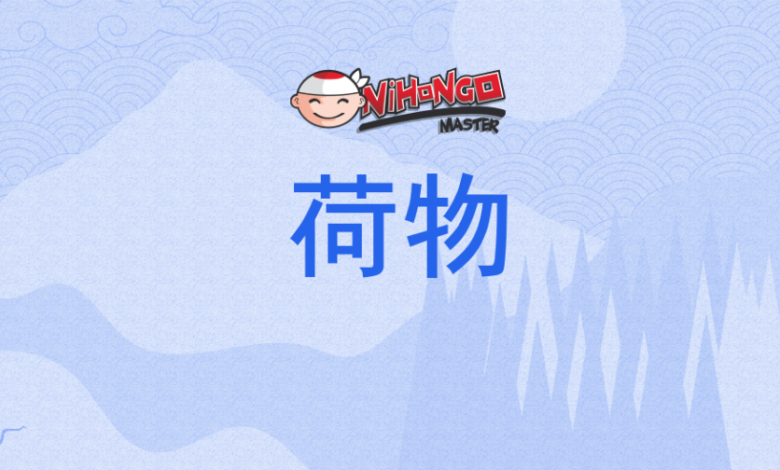Nimotsu Mochi No Nousuji Musou: Everything You Need To Know

The term “nimotsu mochi no nousuji musou” literally translates to “luggage rolling technique” or “skillful way of packing luggage”. It is derived from two Japanese words – “nimotsu”, which means luggage, and “mochi no nousuji musou”, which roughly translates to rolling or compressing rice cakes. The comparison between packing luggage and making rice cakes may seem strange at first, but it actually makes perfect sense when you understand the underlying principles behind this method.
Nimotsu mochi no nousuji musou, also known as “the art of packing luggage like a pro”, is a popular term used in Japan to describe the skillful method of efficiently and effectively packing luggage for travel. This practice has gained traction not only in Japan but also around the world, as more and more people are looking for ways to optimize their packing techniques.
Just like how rice cakes need to be compressed tightly to maintain their shape, nimotsu mochi (packed luggage) also needs to be tightly packed in order to minimize space and prevent items from shifting during transit. This ensures that your belongings arrive safely at your destination without any damage or breakage.
Origins and History
Nimotsu Mochi No Nousuji Musou, also known as “traveler’s mochi,” is a unique type of mochi that has been enjoyed in Japan for centuries. Its origins can be traced back to the Edo period (1603-1868) when it was originally created as a portable and nutritious food for travelers on long journeys.
During this time, Japan was experiencing a period of economic growth and urbanization, leading to an increase in travel and trade between regions. Carrying food on these journeys was essential, but traditional rice balls or onigiri were not practical due to their short shelf life. This led to the creation of nimotsu mochi, which had a longer lifespan and could withstand rough handling during travels.
The name “nimotsu” translates to “luggage” or “baggage,” while “mochi” refers to the glutinous rice cake used as the base ingredient. The term “nousuji musou” roughly translates to “no flavor left behind” or “full-packed flavor,” highlighting its ability to preserve its taste for extended periods.
Originally, nimotsu mochi was made by flattening cooked rice into thin sheets, then filling them with savory ingredients such as pickled plums (umeboshi), dried fish flakes (katsuobushi), or seasoned seaweed (nori).
What is Nimotsu Mochi No Nousuji Musou Used for?
Nimotsu Mochi No Nousuji Musou is a traditional Japanese snack that has been enjoyed for centuries. This delicious treat is made from mochi, a type of rice cake, and is often filled with various sweet or savory fillings. But what exactly is Nimotsu Mochi No Musou used for? In this section, we will explore the many different purposes and uses of this unique delicacy.
- Festivals and Celebrations
In Japan, Nimotsu Mochi Nousuji Musou is commonly eaten during festivals and celebrations. It is often served as part of traditional New Year’s festivities or at local matsuri (festivals) throughout the year. The soft and chewy texture of the mochi makes it easy to eat on-the-go while enjoying the lively atmosphere of these events.
- Snack/Street Food
Another popular use for Nimotsu Mochi Nousuji Musou is as a snack or street food. Vendors can be found selling freshly made mochi filled with red bean paste, chocolate, or other sweet fillings in bustling shopping streets or outside train stations in Japan. It’s a convenient and tasty option for those looking for a quick bite to eat while out and about.
Traditional Preparation Method
The traditional preparation method for nimotsu mochi, also known as nousuji musou, has been passed down through generations in Japan. This meticulous and time-consuming process requires a great deal of skill and patience to master, making it an art form in itself.
To start off, the key ingredient for nimotsu mochi is high-quality glutinous rice or mochigome. This type of rice is different from regular rice as it has a higher starch content which gives it its characteristic chewiness when cooked. The rice is first soaked in water overnight to soften it and then steamed until fully cooked.
Once the rice has cooled down, it is placed into a large wooden mortar called an usu and pounded with a large wooden mallet called kine. This pounding process requires precise timing and strength to achieve the desired texture – not too soft but not too hard either. In traditional households, this task was usually assigned to men as their physical strength was deemed necessary for this step.
As the pounding continues, small amounts of hot water are added gradually to keep the mochi dough moist and pliable. This also helps with shaping and prevents the dough from sticking to the mortar or mallet. The rhythmic sound of pounding can be heard throughout the neighborhood during this stage, adding a sense of community and tradition to the process.
Health Benefits of Nimotsu Mochi No Nousuji Musou
Nimotsu Mochi No Nousuji Musou, also known as “Traveler’s Rice Cake of the Brain,” has been a popular snack in Japan for centuries. Not only is it delicious, but this unique mochi also offers numerous health benefits that have made it a staple in Japanese cuisine. In this section, we will explore the various ways Nimotsu Mochi Nousuji Musou can benefit your health.
- Boosts brain function
As the name suggests, Nimotsu Mochi No Nousuji Musou is believed to enhance brain function and improve memory. This is due to its key ingredient – tsubuan (sweet red bean paste), which contains high levels of anthocyanins – powerful antioxidants known for their ability to protect brain cells from damage and improve cognitive function.
- Rich in nutrients
Nimotsu Mochi No Nousuji Musou is made from glutinous rice flour, which is rich in essential nutrients such as carbohydrates, protein, and fiber. It also contains vitamins B and E, calcium, iron, magnesium, and potassium. These nutrients are vital for maintaining overall health and well-being.
How to Incorporate Nimotsu Mochi No Nousuji Musou into Your Diet
Nimotsu Mochi No Nousuji Musou, also known as Japanese beef stomach mochi, is a unique and delicious dish that has been enjoyed in Japan for centuries. Made from tender beef stomach wrapped in mochi (a type of glutinous rice cake), this dish is not only full of flavor but also packed with protein and nutrients.
If you’re looking to incorporate it into your diet, here are a few tips on how to do so:
- Start with a small portion: Nimotsu Mochi Nousuji Musou can be quite filling due to its combination of protein and carbohydrates. Therefore, it’s best to start with a small portion and see how your body reacts before incorporating it into your regular meals.
- Pair it with vegetables: While the beef stomach provides plenty of protein, it’s always good to balance out your meal with some vegetables. You can serve Nimotsu Musou alongside steamed or stir-fried veggies like bok choy, broccoli, or carrots.
- Add some variety: As delicious as traditional Nimotsu Nousuji Musou is, there are many variations you can try to mix things up. For example, you can add different types of meat like chicken or pork instead of beef stomach.




